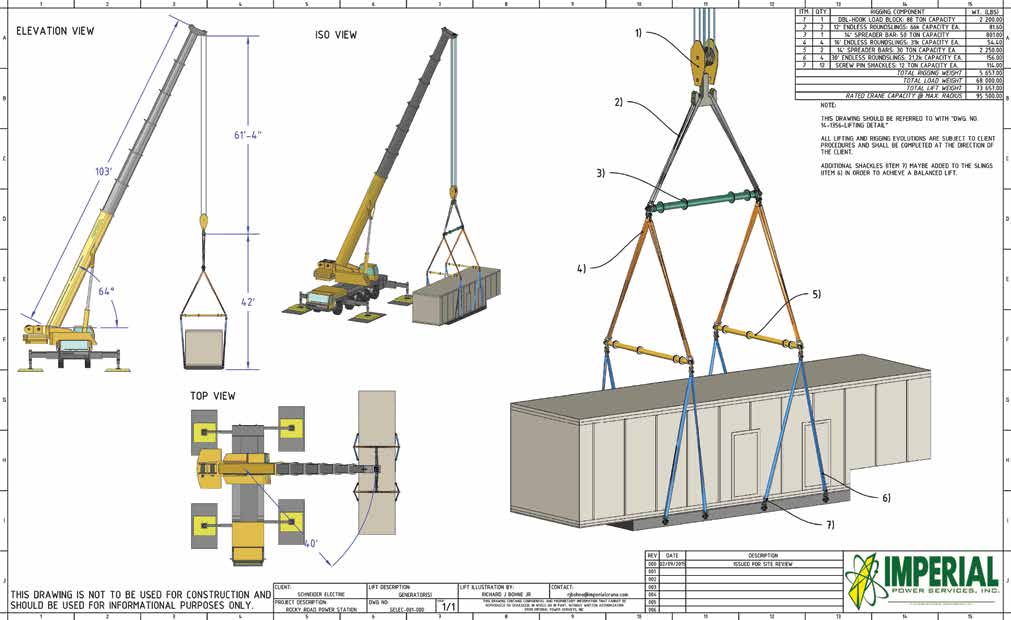

- #CRANE LIFT SAFETY PLAN MANUALS#
- #CRANE LIFT SAFETY PLAN LICENSE#
The design of all commercial cranes and hoists shall comply with the requirements of ASME/ANSI B30 standards and Crane Manufacturer's Association of America standards (CMAA-70 and CMAA-74). Crane and Hoist Safety Design Requirementsįollowing are the design requirements for cranes and hoists and their components: #CRANE LIFT SAFETY PLAN LICENSE#
Crane and Hoist Operators must renew their license every three years by satisfying the requirements described above.

The candidate will be issued a license upon approval by the Safety Manager. Upon successful completion of training, the licensed crane and hoist operator and the candidate's supervisor will fill out and sign the Qualification Request Form and Crane Safety Checklist and send them to the Safety Office for approval. To be qualified as a Crane and Hoist Operator, the candidate shall have received hands-on training from a licensed, qualified crane and hoist operator designated by the candidate's supervisor. The company issues licenses for authorized employees who have been specifically trained in crane and hoist operations and equipment safety. Safe Operating RequirementsĪll workers who use any crane or hoist shall have an operator's license.
Interpreting crane and hoist safety rules and standards. Periodically verifying monthly test and inspection reports. Issuing licenses to Crane and Hoist Operators. Conducting training for all Crane & Hoist Operators. #CRANE LIFT SAFETY PLAN MANUALS#
Maintaining all manuals for cranes and hoists in a central file for reference.The evaluation, inspection, and testing may include, but are not limited to visual, dye penetrant, and magnetic particle techniques referenced in ASME B30.10 (Hooks, Inspection and Testing.) Scheduling a non-destructive test and inspection for crane and hoist hooks at the time of the periodic load test, and testing and inspecting before use new replacement hooks and other hooks suspected of having been overloaded.Inspecting and load testing cranes and hoists following modification or extensive repairs (e.g., a replaced cable or hook, or structural modification.).Maintaining written records of inspections and tests, and providing copies of all inspections and test results to facility managers and building coordinators who have cranes and hoists on file.Conducting periodic and special load tests of cranes and hoists.Performing annual maintenance and inspection of all cranes and hoists that are not covered by a program with maintenance responsibility.

Engineering/Maintenance/Operations Department is responsible for:
Participating in the medical certification program, as required. Having a valid operator's license on their person while operating cranes or hoists. Selecting and using rigging equipment appropriately. Conducting functional tests prior to using the equipment. Crane and Hoist Operators are responsible for: Ensuring that hoisting equipment is inspected and tested monthly by a responsible individual and that rigging equipment is inspected annually. Evaluating crane and hoist trainees using the Crane Safety Checklist and submitting the Qualification Request Form to the Safety Office to obtain the operator's license. This training must be conducted by a qualified, designated instructor who is a licensed crane and hoist operator and a full-time employee. Providing training for prospective crane and hoist operators. Ensuring that employees under their supervision receive the required training and are certified and licensed to operate the cranes and hoists in their areas. The safety rules and guidance in this chapter apply to all operations at that involve the use of cranes and hoists installed in or attached to buildings and to all employees, supplemental labor, and subcontractor personnel who use such devices. 's policy is to maintain a safe workplace for its employees therefore, it cannot be overemphasized that only qualified and licensed individuals shall operate these devices. Many types of cranes, hoists, and rigging devices are used at for lifting and moving materials.







 0 kommentar(er)
0 kommentar(er)
